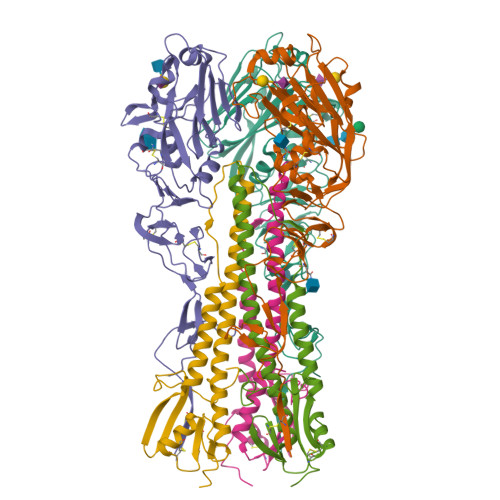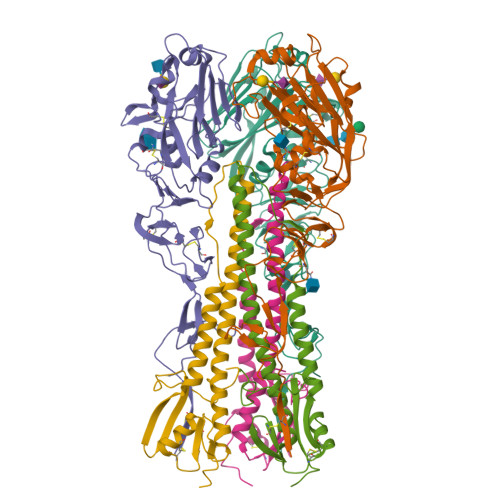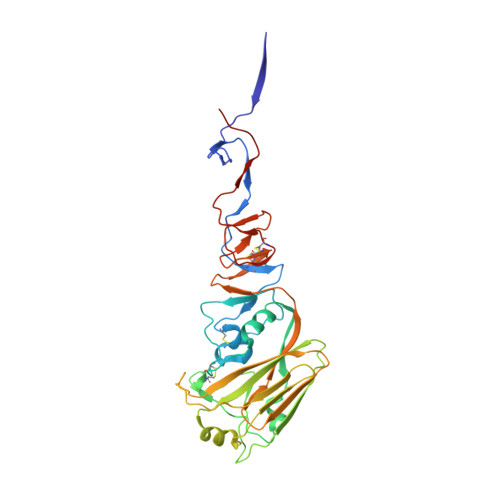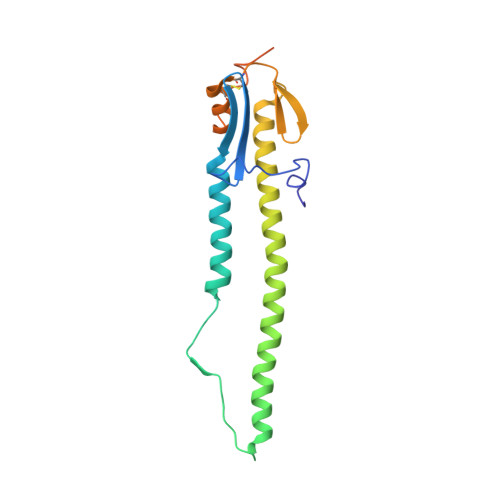Determinant of receptor-preference switch in influenza hemagglutinin.
Ni, F., Kondrashkina, E., Wang, Q.(2017) Virology 513: 98-107
- PubMed: 29055255
- DOI: https://doi.org/10.1016/j.virol.2017.10.010
- Primary Citation of Related Structures:
5VMC, 5VMF, 5VMG, 5VMJ - PubMed Abstract:
Influenza pandemic occurs when a new strain from other animal species overcomes the inter-species barriers and supports rapid human-to-human transmission. A critical prerequisite to this process is that hemagglutinin (HA) acquires a few key mutations to switch from avian receptors to human receptors. Previous studies suggest that H1 and H2/H3 HAs use different sets of mutations for the switch. This report shows that HA from the 1918 H1N1 pandemic virus (1918H1 HA) adopts the set of mutations used by H2/H3 HAs in receptor-preference switch when its 130-loop is made similar to those of H2/H3 HAs. Thus, the 130-loop appears to be the key determinant for the different mutations employed by pandemic H1 or H2/H3 HA. The correlation of the mutational routes and the 130-loop as unraveled in this study opens the door for efficient investigation of mutations required by other HA subtypes for inter-human airborne transmission.
Organizational Affiliation:
Verna and Marrs McLean Department of Biochemistry and Molecular Biology, Baylor College of Medicine, One Baylor Plaza, Houston, TX 77030, USA.

























